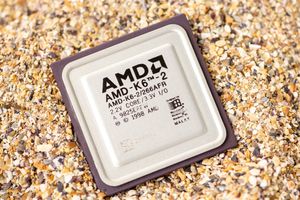
Elevator manufacturer Otis (NYSE: OTIS) met Wall Street’s revenue expectations in Q1 CY2025, but sales fell by 2.5% year on year to $3.35 billion. The company’s full-year revenue guidance of $14.7 billion at the midpoint came in 1.1% above analysts’ estimates. Its non-GAAP profit of $0.92 per share was 1.3% above analysts’ consensus estimates.
Is now the time to buy OTIS? Find out in our full research report (it’s free).
Otis (OTIS) Q1 CY2025 Highlights:
- Revenue: $3.35 billion vs analyst estimates of $3.35 billion (2.5% year-on-year decline, in line)
- Adjusted EPS: $0.92 vs analyst estimates of $0.91 (1.3% beat)
- Adjusted EBITDA: $602 million vs analyst estimates of $614 million (18% margin, 2% miss)
- The company lifted its revenue guidance for the full year to $14.7 billion at the midpoint from $14.25 billion, a 3.2% increase
- Management reiterated its full-year Adjusted EPS guidance of $4.05 at the midpoint
- Operating Margin: 12.3%, down from 15.8% in the same quarter last year
- Free Cash Flow Margin: 4.7%, similar to the same quarter last year
- Organic Revenue was flat year on year (3.8% in the same quarter last year)
- Market Capitalization: $36.52 billion
StockStory’s Take
Otis’s first quarter results showed stability in its service-driven business model, with organic sales flat year over year as gains in service were offset by lower new equipment sales. CEO Judy Marks emphasized that service organic sales grew across all regions, while modernization orders rose 12%, highlighting modernization and service as key contributors to performance. She noted, “Solid growth in service, coupled with margin expansion, enabled us to grow adjusted EPS 5% in the quarter.”
Looking ahead, management raised its full-year revenue guidance, driven by expectations of continued strength in the service segment and a growing installed base. However, the company acknowledged macroeconomic uncertainty and the impact of new U.S. tariffs on Chinese imports. Marks stated that Otis is actively mitigating tariff effects through supply chain adjustments and contractual measures but expects some temporary profit headwinds as existing backlog is executed under higher tariff costs. The company reiterated confidence in its service flywheel model to drive profitability in the face of these challenges.
Key Insights from Management’s Remarks
Management highlighted the resilience of Otis’s service business and the evolving impact of global trade dynamics on new equipment. The quarter’s performance was shaped by a mix of steady service growth and ongoing headwinds in new installations, especially in China and the Americas.
- Service-driven momentum: Otis’s service segment, including maintenance, repair, and modernization, continued to expand, with service organic sales up 4% and maintenance portfolio growth across all regions. The repair backlog increased 5%, positioning the company for stronger growth in future quarters.
- Modernization growth cycle: Management pointed to a global multiyear growth cycle in elevator modernization, supported by a large installed base of aging units. Modernization orders increased 12% in the quarter, and Otis expects this trend to provide a significant revenue opportunity, particularly as safety regulations and customer needs evolve.
- New equipment headwinds: New equipment sales declined, mainly due to continued weakness in China and project delays in the Americas. Otis’s Americas new equipment orders grew mid-teens, but these gains were offset by backlog headwinds from prior periods and market softness in China, where orders declined more than 20%.
- Tariff and supply chain adjustments: The introduction of new U.S. tariffs on imports from China is expected to impact new equipment profitability. Management is mitigating through supply chain shifts, alternative sourcing, and contractual pricing adjustments on new orders, but the impact will be most pronounced as the company works through its existing backlog.
Drivers of Future Performance
Otis’s outlook for the remainder of the year centers on expanding its service and modernization businesses while navigating tariff-related headwinds and project delays in new equipment. Management’s strategic priorities are designed to sustain profitability as external factors continue to shape demand and cost dynamics.
- Service and modernization focus: The company expects continued growth in service and modernization segments to drive revenue and margin expansion, with the installed base projected to reach 23 million units by year-end. These segments are less sensitive to tariff fluctuations.
- Tariff mitigation and backlog execution: Management is working to offset the impact of U.S. tariffs on Chinese imports with supply chain adaptations and commercial negotiations. The majority of profit headwinds will arise from executing existing backlog, but mitigation efforts are expected to reduce the effect in future periods.
- Productivity and transformation savings: Ongoing cost-saving initiatives, including the Uplift and China Transformation programs, are expected to deliver $90 million in savings in 2025, supporting operating margin stability and offsetting inflationary and tariff pressures.
Top Analyst Questions
- Jeffrey Sprague (Vertical Research): Asked about the gross and net impact of tariffs and the company’s mitigation actions. Management explained that while the annualized gross impact is $100 million, mitigation should halve this, and commercial measures will address the rest over time.
- Amit Mehrotra (UBS): Inquired about the nature of pricing actions taken in response to tariffs and any local market retaliation in China. Management said price increases have been implemented across business lines, and no direct market retaliation has been observed in China so far.
- Nigel Coe (Wolfe Research): Sought clarification on the timing and accounting of tariff effects and margin expectations. Management detailed that the in-year 2025 tariff impact is estimated at $60 million, with mitigation improving in future quarters as the backlog is worked through.
- Joe O’Dea (Wells Fargo): Asked about project delays in Americas new equipment and differences in discretionary trends between new installations and modernization. Management stated that delays are mainly in low- and mid-rise projects, but modernization remains robust due to both discretionary upgrades and regulatory-driven projects.
- Julian Mitchell (Barclays): Questioned the expected cadence of sales and margins over the year. Management indicated that organic sales growth and margin expansion should be steady and improve through the year, with tariffs’ effects front-loaded as the backlog is executed.
Catalysts in Upcoming Quarters
In monitoring Otis’s progress over the coming quarters, the StockStory team will focus on (1) the pace of repair and modernization backlog conversion, which is expected to accelerate and support revenue growth, (2) the effectiveness of tariff mitigation strategies as existing backlog is executed, and (3) stabilization or improvement in new equipment orders, particularly in China and the Americas. Execution on cost-saving initiatives and supply chain adjustments will also be key areas to track.
Should you load up on OTIS, sell, or stay put? The answer lies in our free research report.
Stocks That Trumped Tariffs in 2018
Donald Trump’s victory in the 2024 U.S. Presidential Election sent major indices to all-time highs, but stocks have retraced as investors debate the health of the economy and the potential impact of tariffs.
While this leaves much uncertainty around 2025, a few companies are poised for long-term gains regardless of the political or macroeconomic climate, like our Top 9 Market-Beating Stocks. This is a curated list of our High Quality stocks that have generated a market-beating return of 175% over the last five years.
Stocks that made our list in 2019 include now familiar names such as Nvidia (+2,183% between December 2019 and December 2024) as well as under-the-radar businesses like Sterling Infrastructure (+1,096% five-year return). Find your next big winner with StockStory today.






